Paphos has a reputation as the best Cypriot resort for a romantic trip or for a quiet respectable vacation. The city is surrounded by picturesque bays and secluded beaches where you can endlessly enjoy the sound of sea waves.
The historical sights of Paphos are valuable architectural monuments that have remained to people from the greatest civilizations of antiquity. Greek and Roman buildings, medieval castles, the first Christian monasteries - all these places will certainly attract the attention of tourists.
In Paphos and its environs there is everything for a high-quality and high-grade rest - excellent hotels with European service, taverns with delicious Cypriot cuisine and magnificent well-groomed beaches with clear water.
What to see and where to go in Paphos?
The most interesting and beautiful places for walking. Photos and a short description.
- Archaeological Park of Paphos
- Villa of Dionysus
- Saranta Kolones Castle
- Odeon Theater
- Paphos castle
- Tombs of the Kings
- Catacombs of Saint Solomon
- Church of Panagia Chrysopolitissa
- Monastery of Saint Neophyte
- Chrysoroyatissa Monastery
- Archaeological Museum
- Byzantine Museum
- Ethnographical museum
- Bird and Animal Park
- Eleuthkia Botanical Park
- Sea caves
- Akamas Peninsula National Park
- Petra tou Romiou
- Paphos city beach
- Aquapark Aphrodite
Archaeological Park of Paphos
An open-air museum where the remains of the ancient city of Nea Paphos and the medieval fort of Saranta Kolones dating back to the 7th century are located. In the 1960s inside the buildings of the Roman era III-V centuries. - the houses of Orpheus, Theseus, Aion and Dionysus were found well-preserved mosaics created in accordance with the plots of ancient mythology.
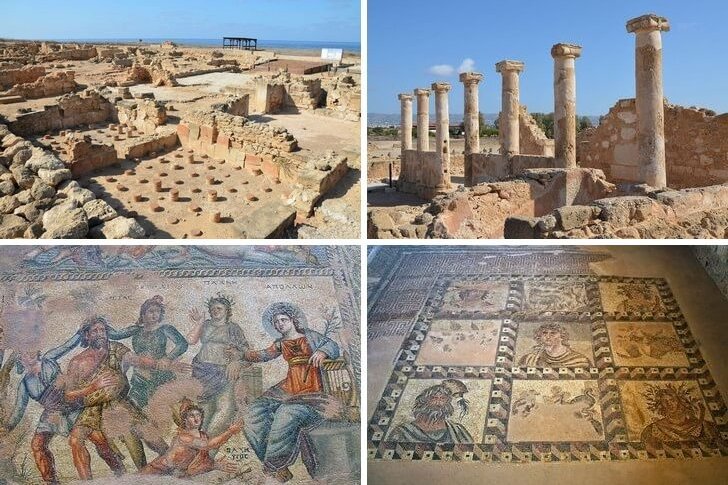
Villa of Dionysus
Remains of an ancient mansion of the 2nd century, once owned by a Roman aristocrat. The name "Villa of Dionysus" was assigned to it for the reason that there is a mosaic "Triumph of Dionysus", which depicts the Greek god of winemaking, sitting on a chariot drawn by leopards. He is accompanied by the gods Pan and Satyr. The villa is located on the territory of the Archaeological Park.
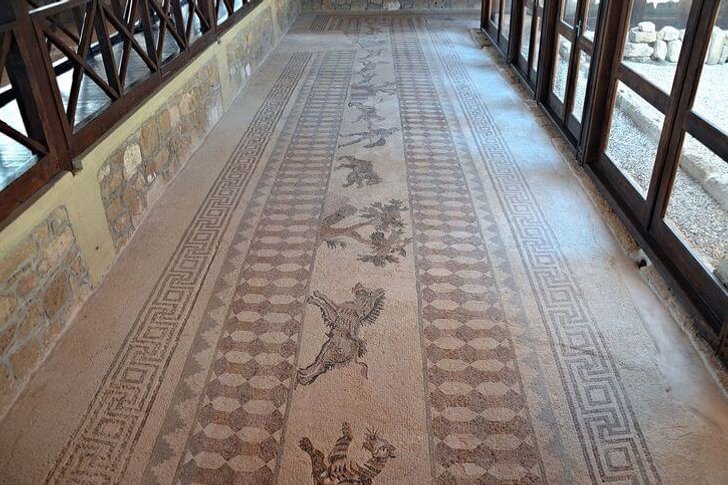
Saranta Kolones Castle
Byzantine fortress, built in the 7th century to protect Paphos from the claims of the Arab conquerors. At that time, it was part of a powerful system of defensive fortifications. In 1200, the building was rebuilt after the knights of the Order of St. John (Hospitallers) settled here. In 1222, the castle was destroyed by an earthquake and has been in ruins ever since.
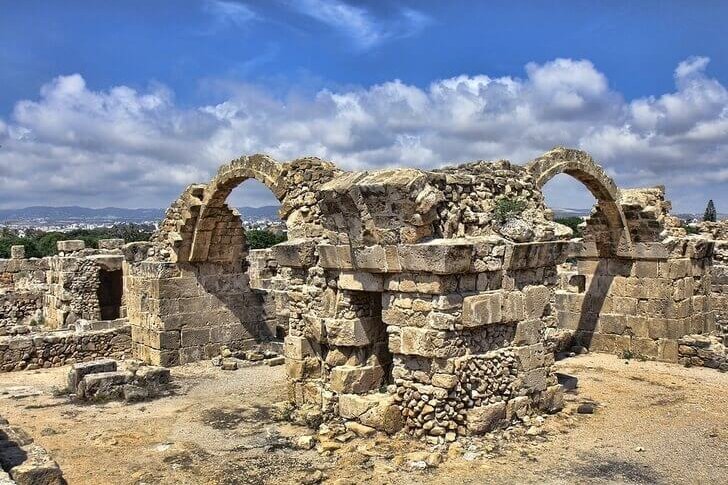
Odeon Theater
Antique amphitheater of the 2nd century, the construction of which was labored by the Greeks and Romans. The Odeon is quite well preserved due to the fact that it was almost completely carved from a monolithic rock. That is why the earthquake of the 4th century did not bring significant damage to it. The theater was discovered in 1973 during excavations. Nowadays, festivals and concerts are held on its territory.
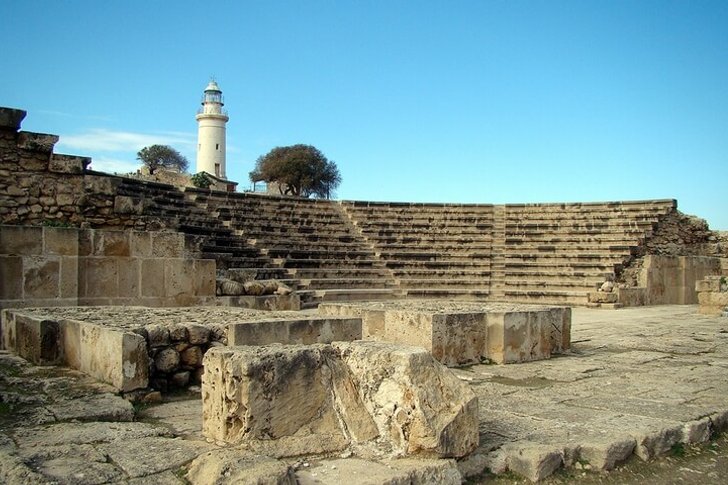
paphos castle
Medieval fortress of the 13th century, which previously served as a defensive structure, a prison and a warehouse. The fortification existed until 1570, after which it was dismantled by the Venetians. After the conquest of Cyprus by the Ottoman Turks, the castle was restored and fortified. In 1935, it was declared a historical monument and became one of the tourist attractions in Cyprus.
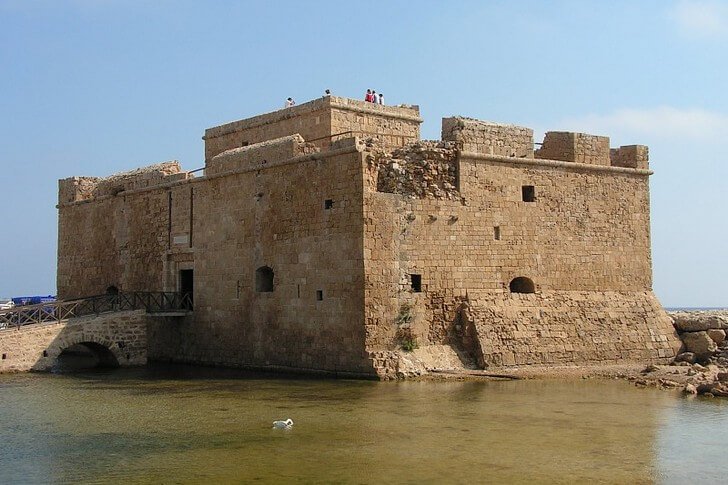
Tombs of the Kings
An underground necropolis carved out of rock, where aristocrats and high officials were buried until the 3rd century. The first graves date back to the 4th century BC. e. Many crypts of the tombs are decorated with columns and frescoes, others are made in the form of full-fledged residential buildings. In these catacombs, the first adherents of the Christian religion hid from persecution.

Catacombs of Saint Solomon
The catacombs were dug in the 4th century BC. e. and were originally used as tombs. At the end of the 2nd century, Saint Solomonia, who fled from Palestine with her sons, hid here from persecution. The children of the martyr were killed before her eyes by order of King Antiochus, she herself died while praying over their bodies. It is believed that the relics of Saint Solomon are buried in one of the grottoes of the catacombs.
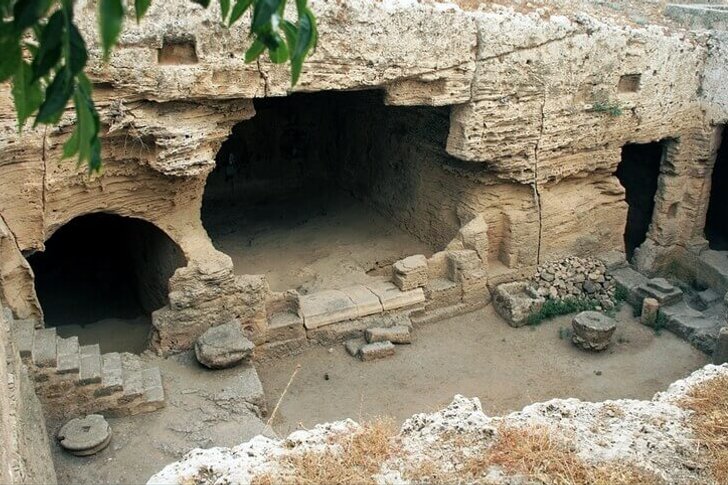
Church of Panagia Chrysopolitissa
It is believed that the Apostle Paul was subjected to corporal punishment in the 1st century on the site of the temple, after which he converted the first Roman official to Christianity. In the IV century, an early Christian basilica in the Byzantine style was erected here. Around 1300, a large three-aisled church was built next to it, which lasted until the 16th century. The modern temple was erected on the ruins of the basilica around 1500. Today it is an important pilgrimage center.

Monastery of Saint Neophyte
The monastery was founded in the 12th century by the wandering monk Neophyte the Recluse. The complex is located about 10 km. from Paphos. After the conquest of Cyprus by the Turks, the monastery was plundered and gradually fell into disrepair. Its revival began only in the middle of the XVIII century. The relics of St. Neophyte, discovered in 1756, are stored in the main temple of the monastery. Today, the monastery is a center of pilgrimage and a popular tourist attraction.
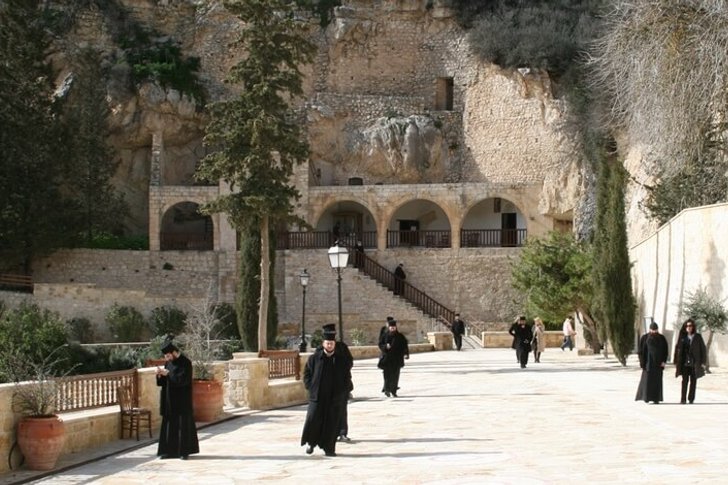
Chrysoroyatissa Monastery
Men's monastery 40 km. from Paphos, founded by the hermit Ignatius in the XII century. The monastery complex acquired its modern look in 1770, when new buildings appeared on its territory. The main relic of the monastery is an ancient icon of the Mother of God, which Ignatius miraculously fished out of the waters of the Mediterranean Sea (according to another version, the hermit found the image of the Virgin Mary in one of the mountain caves).
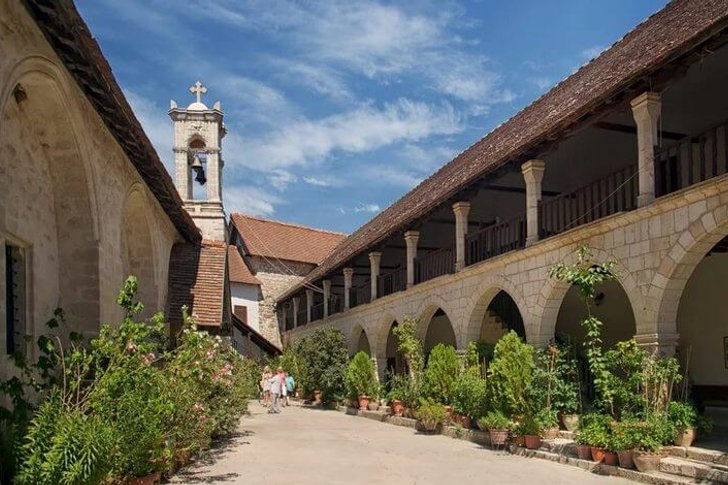
Archaeological Museum
The exposition of the museum consists of finds discovered during excavations in the area of Marione¸ Lempe¸ New Paphos¸ Geroskipou and other ancient settlements. The collection is housed in five rooms. It consists of stone sculptures, pottery, jewelry and other artifacts belonging to a time period spanning several millennia. The museum was opened in 1936, in 1966 it moved to a separate building.
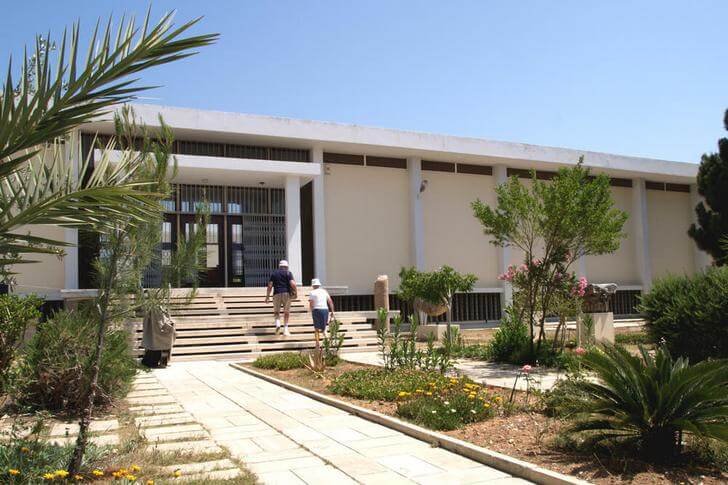
Byzantine Museum
The museum was established in 1983 with the participation of the highest church hierarchs of Cyprus for the purpose of studying and popularizing Byzantine church art. The exposition consists of valuable Orthodox icons of the 7th-19th centuries, frescoes and iconostases taken from the ruined churches of the Metropolis of Paphos, manuscripts, church utensils and ancient theological literature found on the territory of monasteries that fell into decay.
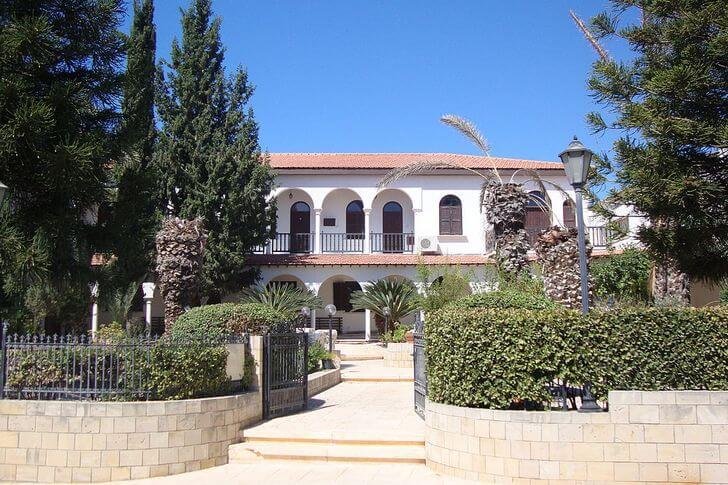
Ethnographical museum
Private collection of the Eliadis family, which has existed since 1958. The museum is located in a historical building of the 15th century. Antique furniture, ceramics, works of folk art, interior items, dishes, textiles, coins and other valuable exhibits are exhibited here. The Eliadis family was seriously interested in the history and culture of Cyprus. They have been collecting their collection for several decades.
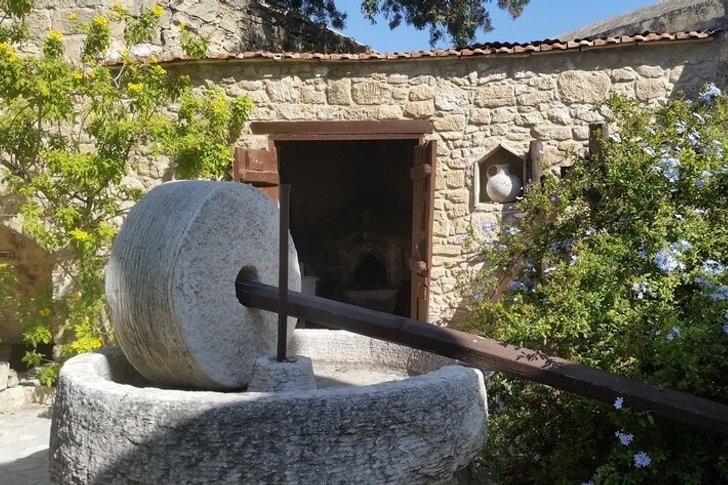
Bird and Animal Park
The park grew out of the private collection of the ornithologist K. Cristoforou, who kept exotic birds at home for a long time. In 2003, there was not enough housing space, so it was decided to create a public park. Today this place has become one of the most visited attractions in Cyprus. In addition to a large number of birds, crocodiles, tigers, giraffes, kangaroos and other animals live here.

Eleuthkia Botanical Park
The park is located on a relatively small area. It consists of 13 themed gardens, where thousands of plants grow, including roses, cacti, conifers, tropical flowers and many other species. The park has a small exposition made up of Cypriot household items. There is also a tavern for visitors, where you can have lunch after a walk through the picturesque park alleys.
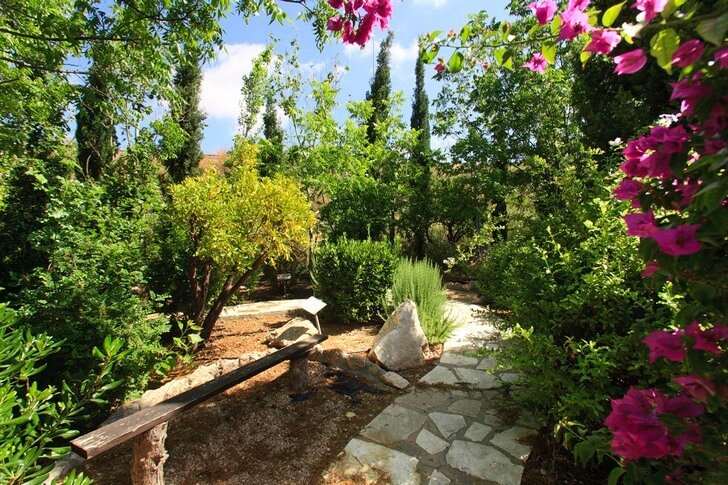
sea caves
A section of the coast about 18 km from Paphos, dotted with picturesque grottoes, bays and bizarre rock formations in the form of arches. In some places, a safe descent to the water is equipped for tourists so that they can plunge into the gentle Mediterranean Sea. Sea caves are an incredibly beautiful place that attracts romantics and lovers of bewitching landscapes.
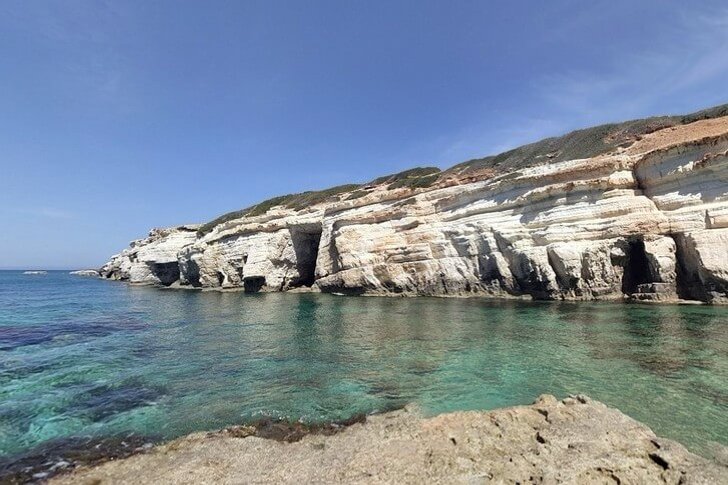
Akamas Peninsula National Park
A protected area located 50 km from Paphos. The park is a unique piece of pristine nature in Cyprus. Rare endemic plants grow on the territory of the reserve, more than 168 species of birds, several dozen species of reptiles and mammals live. The Akamas ecosystem is located on the border of several natural zones, which creates rare climatic conditions here.

Petra tou Romiou
Petra tou Romiou is also known as Aphrodite's Rock. It was here, according to legend, that the Greek goddess of beauty was born from the foam of the sea. According to another legend, the Achaeans landed at this place after arriving from Troy. There is a picturesque beach near the rock, where a harmonious and cozy atmosphere reigns. The natural beauty of this place attracts many tourists who want to admire the picturesque landscapes.
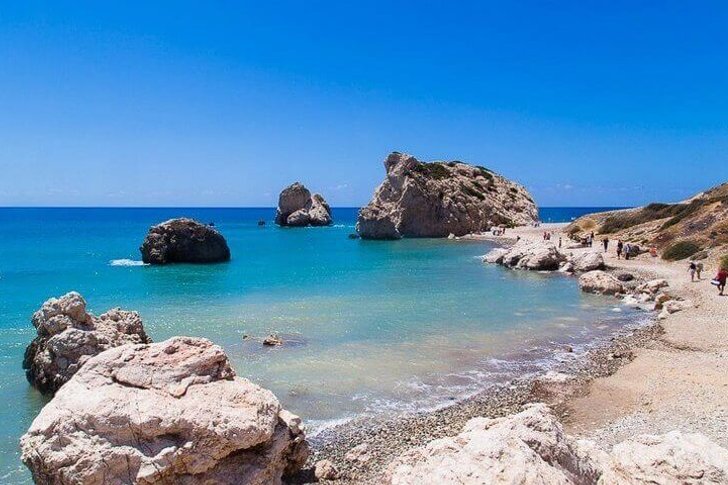
Paphos city beach
The bathing area is located in the center of the tourist part of the city near the Paphos castle. The beach stretches for 150 meters along the coast. It is surrounded by numerous bars and taverns, and is equipped with all the necessary infrastructure. On the beach you can rent catamarans, jet skis, "bananas" and other water transport.
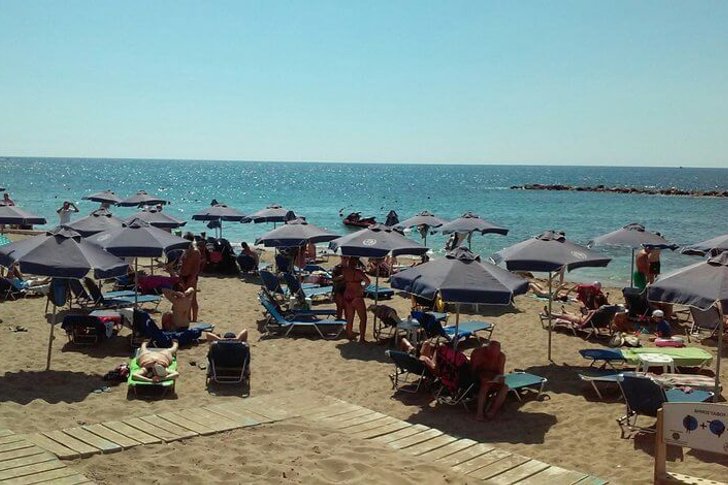
Aquapark "Aphrodite"
Aphrodite is the third largest water amusement park on the island of Cyprus. There are 23 slides for tourists, designed for both adults and children. The water park has several outdoor pools and comfortable recreation areas. Landscape designers have worked on the interior space, who managed to create a paradise of tropical vegetation.
